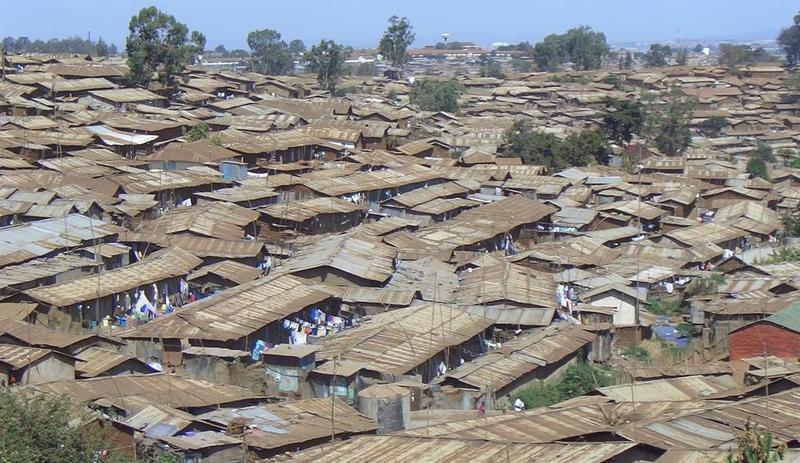
Hakijamii Economic and Social Rights Centre. (2012). Draft Eviction and Resettlement Guidelines and Draft Bill, 2012: An Abridged Version. Nairobi: Hakijamii. Retrieved from http://www.escr-net.org/sites/default/files/Final%20evictions%20booklet.pdf
Pages: 38
This particular document is a very helpful overview of Kenyan laws relevant to resettlement and land rights, and it documents the process of drafting a new resettlement bill. It also includes a draft of the new bill which will hopefully soon be passed.
Hakijamii is an NGO working for the social and economic rights of Kenya’s poorest. In 2006 Hakijamii began to draft some resettlement guidelines in collaboration with the Kenyan government. A bill was presented to parliament in 2012 based on this process.
Quotes:
“The enactment of the Bill will be yet another landmark in the promotion of human rights in the country. It will be an important tool in protecting the rights and dignity, especially of the poor, who have continued to suffer as a result of the endemic cases of forced evictions” (Hakijamii, 5).
Karimi, J. (Date Unkown). Best Practices in Community-Led Processes of Slum Upgrading: The Kenya Experience. Muungano wa Wanavijiji. Retrieved from practicalaction.org/media/download/6753
Pages: 5
Excellent summary of the work of the Muungano wa Wanavijiji initiative. This group partners with Jane Weru and Akiba Mashinani trust, and it’s a genius model.
This is about community-led development, and will work nicely with my Thesis.
Quotes:
“Hindrances: 1. Lack of funds i.e. for transportation, publication of educational material e.g. videos, etc. 2. Governance; poor land and housing policies, political interference from councilors administration officials e.g. chiefs, Districts officers. 3. Lack of materials for accessing credit or loans. 4. Private land developers whose main aim is to remove communities from the lands that they occupy and therefore work against the federation. 5. Insufficient resource centers which would act as communication centers from the local to national level. 6. Lack of skills in technology, business management and legal matters” (Karimi, 5).
Muungano Wa Wanavijiji and Muungano Support Trust. (2013). Community-Led Profiling for Sustainable Urban Planning: Report on Slum Dwellers International 10th East African Hub Meeting. Mombasa, Kenya. Retrieved from http://www.sdinet.org/media/upload/documents/10TH_EAST_AFRICAN_HUB_REPOR T-NOVEMBER_2013.pdf
Pages: 27
The is an excellent report. It gave me a lot more insight into SDI and the work of its East Africa affiliates. Some of the highlights from this report are the move of the EA hub to try to cooperate more closely with their respective governments, and the creative ways in which they have been encouraging that. I am impressed by their enumeration efforts, and their active participation in lobbying for and drafting fair legislation.
Quotes:
“In Kenya, lack of better policies and lack of adequate data for settlements has led to forced evictions and loss of property to many urban slum dwellers. Through the SDI tool of enumerations and mapping, the Kenyan federation has been able to stop evictions through the drive for policy change” (Muungano wa Wanavijiji, 6).
“[In Uganda,] the federation has been able to set a precedent by constructing sustainable projects, which often are showcased to government, and through this, government’s commitment to support community initiatives that demonstrate projects conveniently showing how government could benefit from community initiatives. The federation has conducted research and written proposals. This has led to the signing of MOUs. The transfer of municipal officials from time to time has weakened the federation’s strategy to partner with various arms of government to sustain community led development plans. However, the Ugandan federation is officially translating its partnerships through the signing of MOU’s to ensure continuity of engagements and implementation of projects and community processes” (Muungano wa Wanavijiji, 15).
“How does the federation deal with political interference? (NSDFU)
Political interference is not a case isolation in East Africa. For Kenya the federation is considered a threat to elite politicians as much as matters of development are concerned. Community projects, as driven by the groups politicians end up taking credit for community projects. However, the federation is sensitizing politicians on the federation projects at county and national governments. This has enabled the federation hoister good political will from politicians that has formed credible partnerships” (Muungano wa Wanavijiji, 21).
National Council for Law Reporting. (2012). The National Land Commission Act, 2012: No. 5 of 2012. Nairobi: National Council for Law Reporting. Retrieved from www.housing.go.ke
Pages: 23
National Land Commission Act was passed in 2012 as a part of implementing the new Kenyan constitution. This act established a National Land Commission, which has the power and responsibility to manage public land in a sustainable manner, oversee the giving out of land titles, investigate and mediate disputes, assess taxes, oversee land use planning, research land-related issues and make policy recommendations, maintain a good land information and records system, manage community land, etc.
Njuguna, H. and Baya, M. (2000). Land Reforms in Kenya: An Institution of Surveyors of Kenya (ISK) Initiative. Unpublished. Retrieved from https://www.fig.net/pub/proceedings/korea/full-papers/pdf/session7/njuguna-baya.pdf
Pages: 11
This particular article addresses issues of Land Reform in Kenya. It urges the shaking off of old colonial systems and taking on new ones that more accurately reflect the needs and wants and traditions of the people.
One issue that was particularly interesting was that of individual ownership (English Law), vs. communal ownership (Customary). Communal ownership is more the African way, and is more conducive to life, especially in pastoralist areas. Individual ownership really messes the pastoralists up.
Quotes:
“It is noted that while the concept of individual ownership and the land tenure systems is
beneficial for economic development it has also created some problems:
– Individualization of tenure has in some instances resulted in landlessness
especially in areas where land adjudication and/or consolidation has been
implemented.
– Individualization of tenure may not be suitable in certain parts of the country,
e.g., the pastoralist areas, due to ecological and socio-cultural factors” (Njuguna, 6).
Republic of Kenya (2013). The Community Land Bill, 2013. Kenya Gazette Supplement No. 152 (Senate Bills No. 11). Nairobi: Government Printer. Retrieved from www.kenyalaw.org
Pages: 37
The Community Land Bill of 2013 basically says that any lands that fall under the category of community land, which have previously been governed by customary law and not registered in the formal land system, will now be registered. The customary laws will be officially recognized and integrated into the formal system, and communal lands will be managed by committees which are made up of people who are members of the communities in question.
Syagga, P. (2011) Land Tenure in Slum Upgrading Projects. Retrieved from http://hal.archives- ouvertes.fr/docs/00/75/18/66/PDF/Paul_Syagga_- _LAND_TENURE_IN_SLUM_UPGRADING.pdf
Pages: 9
This is an excellent article that addresses some issues specific to Kenyan land law and gives helpful suggestions that I haven’t heard before.
One extremely exciting thing was that I found out that many slums are buying land communally, which I think is an excellent solution. After I read the community land bill above, I was wondering if something like that would start happening.
Quotes:
“Tenure in the informal settlement is mixed e.g. squatters on public/private land, group purchases through land buying companies, illegally subdivided land by original owners who subsequently sold it” (Syagga, 4).
“It is also not conceivable that there is enough land in any given settlement to be parceled out individually to all residents. Consequently the best titling option to defuse competing interests in slum settlement without land owners is to include every resident under the Community Land Trust (CLT) rather than issuing individual titles… …A resident would own the structure which s/he had built but would not own the land on which the structure was located and thus the land could not be traded. The beneficiaries own the developments, structures and other inputs on their plot; they can bequeath or inherit these developments and they can sell them according to a specific resale formula with the prerogative acquisition right by CLT to ensure that the land remains with the community. The CLT model incorporates the traditional relationship between the land and the structures built on it. It is built on traditional African and Islamic tenure systems. The right of disposal of the land is separate from the right of disposal of the products of one’s labour applied to the land” (Syagga, 7).
